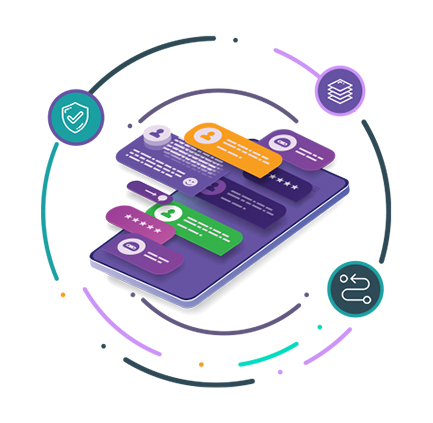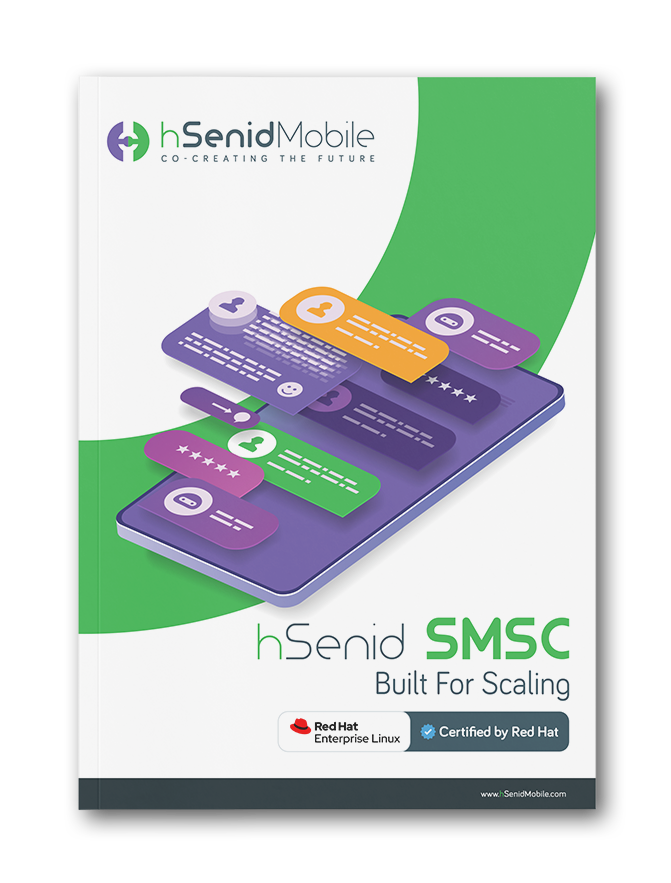As the global rollout of 5G continues to reshape the digital landscape, mobile network operators are under increasing pressure to modernize their telecom infrastructure. Among the foundational elements enabling this transformation is the SMSC gateway, a critical component in the messaging ecosystem that has evolved significantly to meet the demands of a hyper-connected, low-latency, and high-throughput world.
This blog explores how SMSC gateways are playing a revolutionary role in telecom infrastructure post-5G, highlighting their capabilities, benefits, and the pivotal functions they now serve in a 5G-driven environment.
This integration unlocks new opportunities for operators to provide enhanced services like IoT messaging, emergency alerts, and M2M communication—all under the umbrella of 5G messaging capabilities.
Investing in a future-proof SMSC gateway—one that supports IP integration, modular scalability, robust analytics, and seamless cloud compatibility—will be essential to thriving in this new telecom frontier.
By supporting features like 4G/5G interworking, real-time billing, message routing, and bulk SMS management, solutions like hSenid Mobile’s SMSC gateway are paving the way for smarter, faster, and more resilient communication systems.
As we move further into the 5G era and prepare for the innovations of 6G, the SMSC gateway remains a central player, bridging legacy systems with futuristic capabilities and helping operators unlock new streams of revenue while elevating customer experiences. hSenid SMSC Solution offers telecom providers the efficiency, security, and scalability needed to process millions of messages daily, without disruptions. Discover the hSenid SMSC Solution today.
This blog explores how SMSC gateways are playing a revolutionary role in telecom infrastructure post-5G, highlighting their capabilities, benefits, and the pivotal functions they now serve in a 5G-driven environment.
What is an SMSC Gateway?
An SMSC (Short Message Service Center) gateway acts as the central hub for managing the flow of SMS messages across networks. It receives, stores, processes, and forwards text messages to the intended recipient. But beyond its core functionalities, the modern SMSC gateway has transformed into a highly scalable, resilient, and intelligent messaging platform that supports a range of services, including bulk messaging, real-time analytics, and inter-network interoperability.How SMSC Gateways are Powering 5G Messaging
5G is fundamentally about speed, low latency, and network slicing. For SMS to remain relevant and reliable in such an environment, it must integrate seamlessly with IP-based networks. This is where modern SMSC gateways come in. Equipped with technologies such as the SIGTRAN stack, these gateways can now interface with IP-SM Gateways and 5G SMSFs (Short Message Service Function) for SMS interworking across 4G and 5G networks.This integration unlocks new opportunities for operators to provide enhanced services like IoT messaging, emergency alerts, and M2M communication—all under the umbrella of 5G messaging capabilities.
Key Capabilities of Next-Gen SMSC Gateways
- High Availability and Resilience
Telecom networks cannot afford downtime. Today’s SMSC gateways offer high availability with clustered architectures that eliminate single points of failure. Failover mechanisms ensure message delivery continuity during system interruptions, preserving both message integrity and revenue. - Network Scalability and Traffic Handling
With the rise in connected devices and users, message traffic is surging. A scalable SMSC gateway supports horizontal and vertical scaling to accommodate peak loads without compromising performance. This flexibility allows operators to manage operational costs while adapting to growing network demands. - Advanced Routing and Load Balancing
Modern gateways offer configurable message routing rules via intuitive GUIs. Whether it’s routing based on destination, sender ID, or message content, intelligent routing ensures efficient and prioritized delivery. Load balancing across multiple gateways also ensures optimum performance and minimal delay. - Real-Time Charging and Billing:
Supporting prepaid, postpaid, and roaming users, SMSC gateways now provide real-time and offline charging mechanisms. Detailed Call Detail Records (CDRs) allow telecom operators to track transactions, generate reports, and enable accurate billing, essential in today’s fast-moving digital economy. - SMPP and Bulk Messaging Capabilities:
Through SMPP protocol support, SMSC gateways enable seamless connectivity between ESMEs, content providers, and multiple SMSCs. The ability to manage bulk SMS campaigns and personalized messaging enhances the operator’s capability to engage with customers at scale.
Benefits of SMSC Gateways in the 5G Era
- Support for Legacy and Future Networks
A powerful feature of today’s SMSC gateways is their ability to support both legacy SS7 networks and modern IP-based systems. With built-in support for SIGTRAN, they ensure smooth migration and coexistence of 2G/3G with 4G and 5G technologies. - Lower Total Cost of Ownership
Solutions like hSenid Mobile’s SMSC Gateway are designed with cost efficiency in mind. By using in-house built stacks like SIGTRAN, operators avoid costly third-party integrations, reducing TCO while maximizing ROI. - Reduced Message Loss and Improved QoS
Features such as forward-and-store or store-and-forward options enable operators to minimize message loss, especially during high traffic volumes. With built-in overload protection and real-time monitoring, service quality remains consistent—even under pressure. - Enhanced Security and Control
With role-based access control (RBAC), single sign-on capabilities, and a centralized management interface, SMSC gateways provide a secure and efficient environment for network administrators. This governance is vital as telecom systems become more complex and prone to cyber threats.
Use Cases: Where SMSC Gateways Shine in a 5G World
- IoT Device Messaging: As millions of IoT devices communicate via SMS, the SMSC gateway handles high-frequency, low-latency messages with precise delivery assurance.
- Emergency Notifications: During crises, rapid mass communication is vital. SMSC gateways deliver instant alerts reliably.
- Two-factor Authentication (2FA): Security codes for banking and enterprise systems depend on timely SMS delivery.
- Marketing Campaigns: Bulk promotional messages are efficiently managed with campaign analytics and delivery insights.
The Road Ahead
As telecom operators continue to deploy 5G and explore Open Gateway and network-as-a-service models, the role of the SMSC gateway becomes even more critical. Beyond traditional messaging, it will be a cornerstone for cross-network communication, API monetization, and digital engagement strategies.Investing in a future-proof SMSC gateway—one that supports IP integration, modular scalability, robust analytics, and seamless cloud compatibility—will be essential to thriving in this new telecom frontier.
Final Thoughts
The SMSC gateway has evolved from a simple message router into a sophisticated enabler of digital transformation in telecom infrastructure. Post-5G, its role extends far beyond SMS delivery—it becomes the backbone of real-time, secure, and intelligent messaging for telecom operators worldwide.By supporting features like 4G/5G interworking, real-time billing, message routing, and bulk SMS management, solutions like hSenid Mobile’s SMSC gateway are paving the way for smarter, faster, and more resilient communication systems.
As we move further into the 5G era and prepare for the innovations of 6G, the SMSC gateway remains a central player, bridging legacy systems with futuristic capabilities and helping operators unlock new streams of revenue while elevating customer experiences. hSenid SMSC Solution offers telecom providers the efficiency, security, and scalability needed to process millions of messages daily, without disruptions. Discover the hSenid SMSC Solution today.








